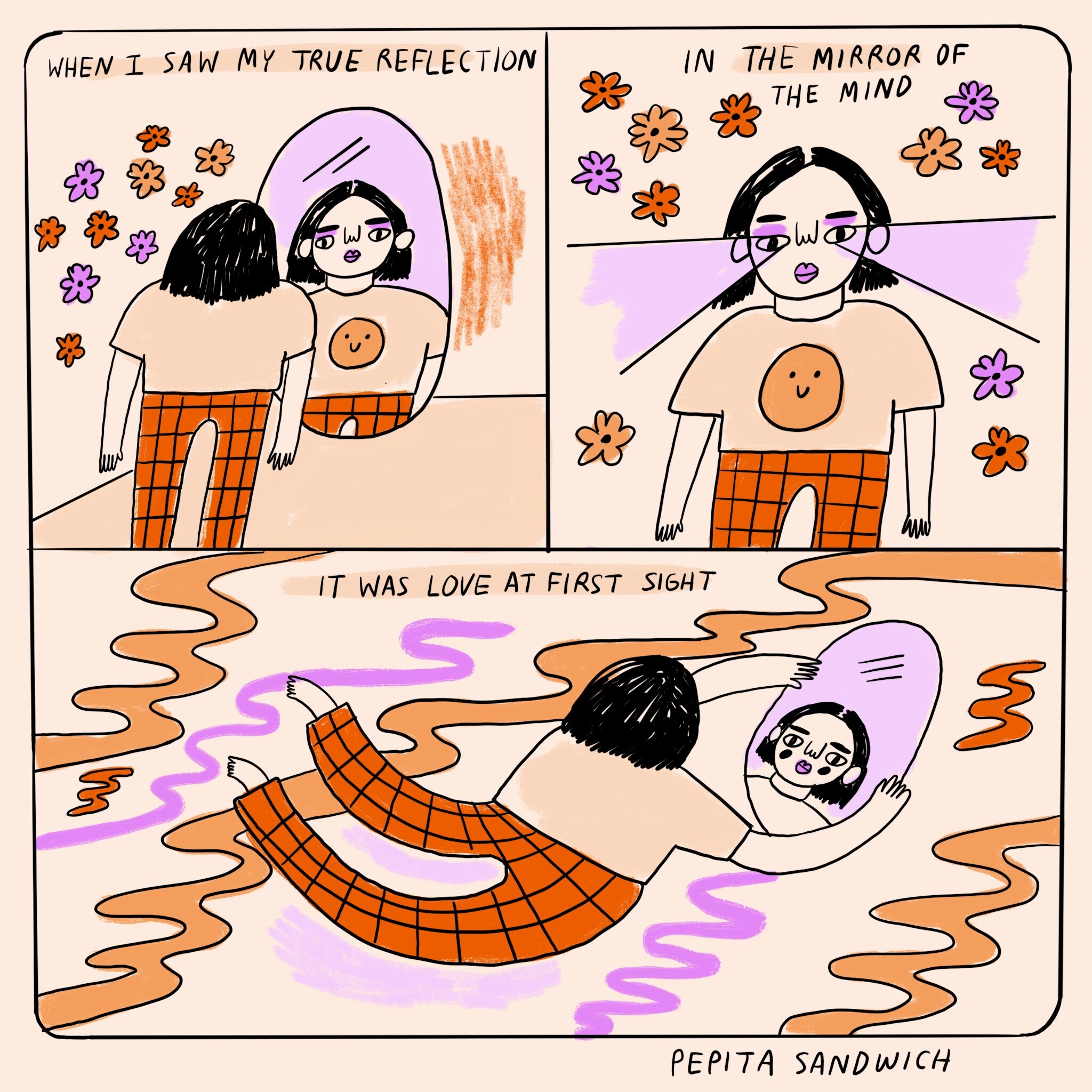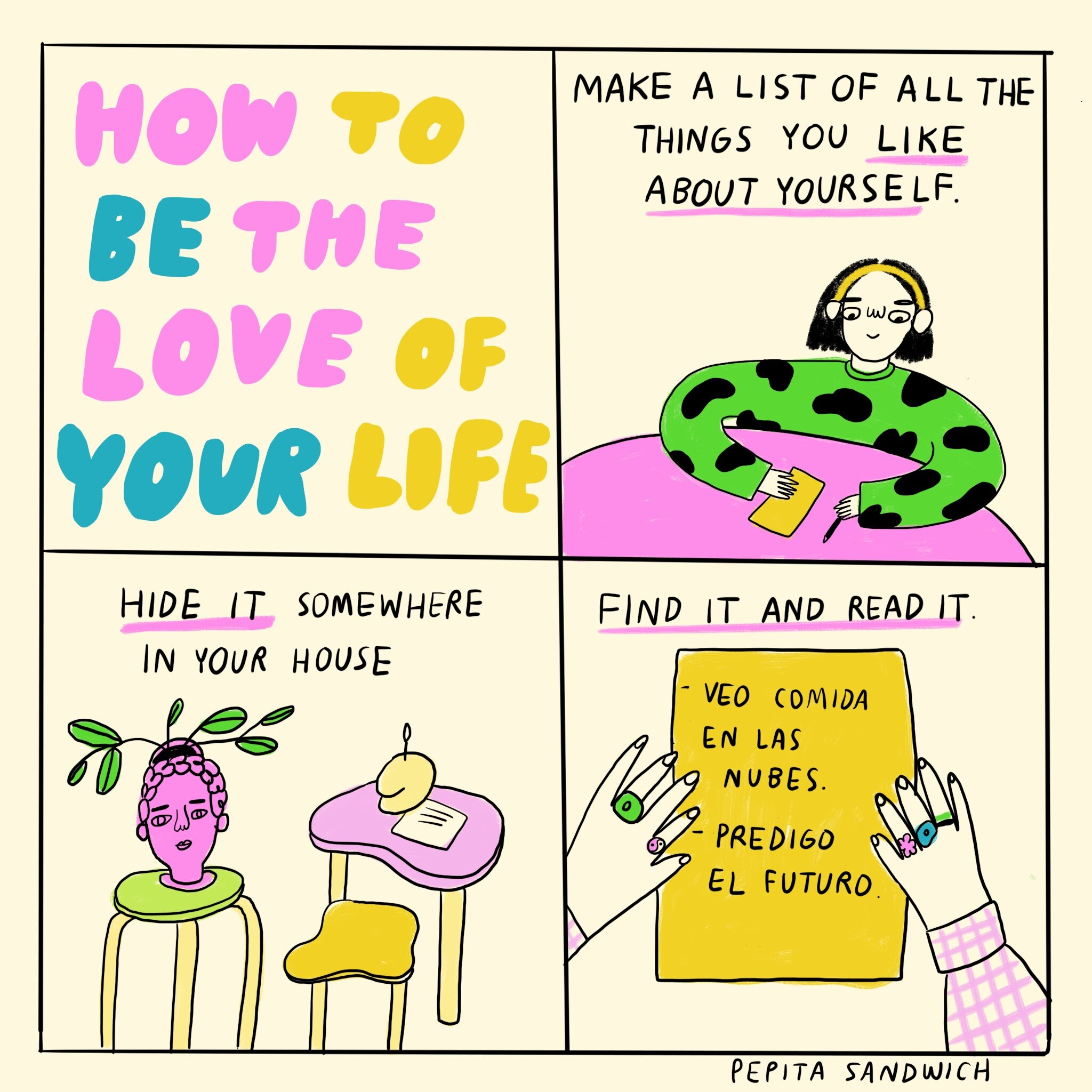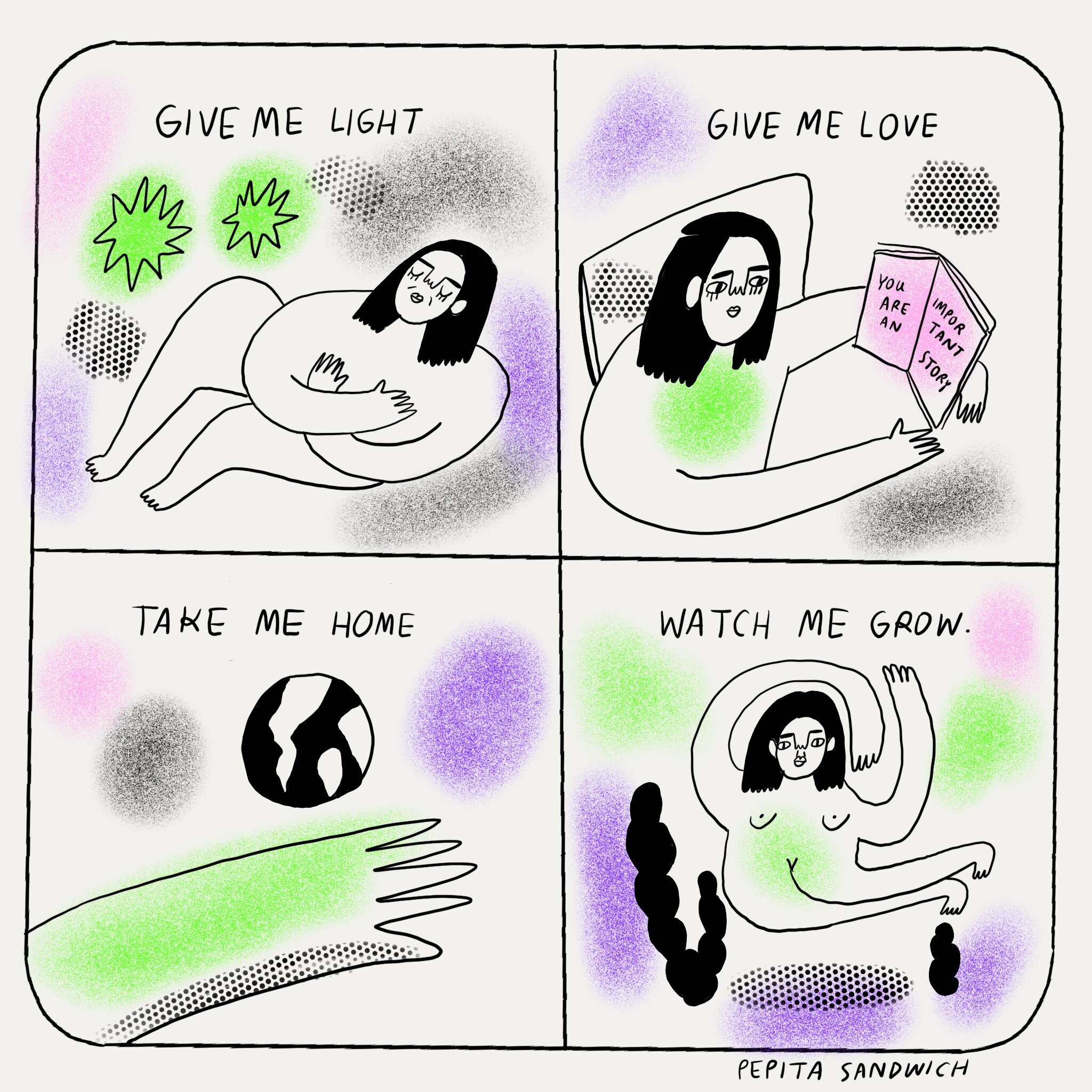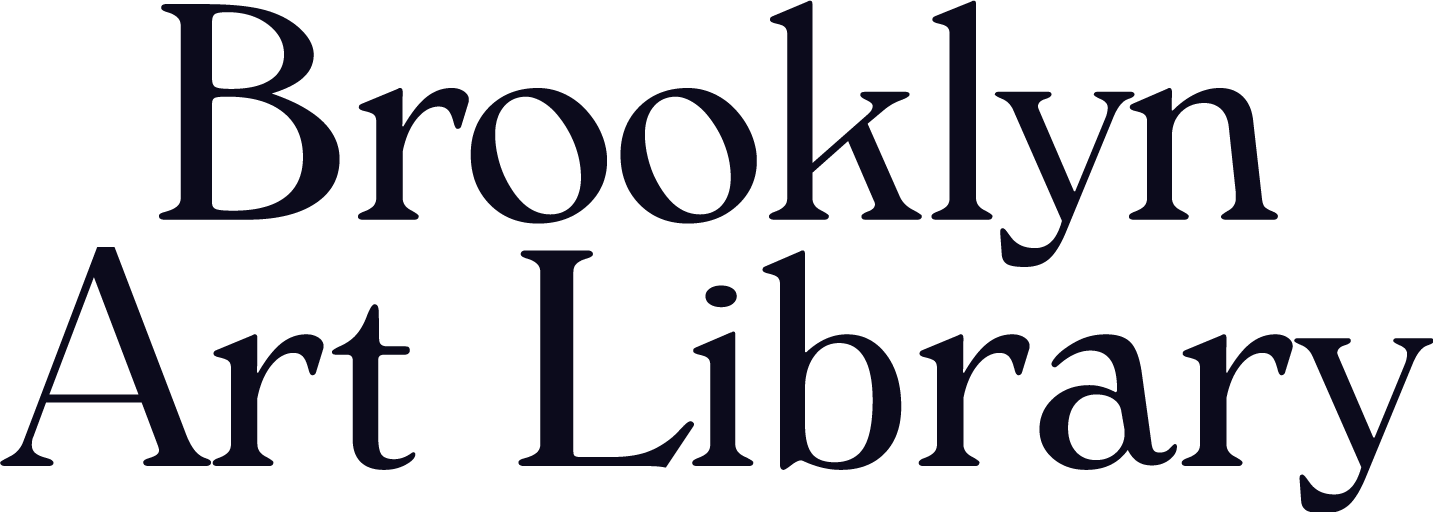Small Talks: Pepita Sandwich
You may recognize the work of Josefina Guarracino, known as Pepita Sandwich, from her eye-catching comics on Instagram and Twitter or her illustration work for companies like Spotify, The Nib, and her recent collaboration with Argentinian creative design company, Monoblock. Based in Buenos Aires and Brooklyn, Josefina’s style is refreshingly empowering, with adorable bright doodles that aren’t afraid to dive into profound topics like moving to a new country, vulnerability in sadness, and finding self-love and body confidence.
On February 22nd, 12PM EST, Josefina will lead a workshop on developing characters and documenting your days through Diary Comics as part of our February workshop series!
You added your sketchbook, “Women Are Like This,” to our collection a couple of years ago, and it’s such a vibrant medley of cut-out shapes and illustrations. Could you talk about the inspiration behind and the process of creating the book?
I wanted to showcase different women and body types. I used cut-out shapes as a metaphor for all the kinds of body shapes there are. I’m always inspired by women and I’m drawn to portraying them. “Women are like this” means we can be anyway we want.
Oftentimes, the most daunting part of a sketchbook is filling out that first blank page. How do you conquer that fear?
I think I always start with the cover. The cover gives me context and permission to start drawing. After doing that, I feel allowed to start with the first page, although sometimes I go back and retouch it while I continue drawing the rest of the sketchbook.
Your illustration work takes the form of digital images, stickers, stationary design, and so much more! You have developed such a whimsical, unique style! How does sketching and keeping sketchbooks play a role in your creative process?
I love keeping sketchbooks and doing automatic drawings in the morning because it keeps my creative flow going and it’s a great way to start off my work day. My professional work is mostly done digitally, but I feel the most free when I’m drawing in my sketchbook. I try to fill one full sketchbook every month and sometimes they have themes. My last month's sketches are all about mushrooms and butterflies.
Along with illustration, you’re also an avid diarist, creating short visual comics about your life, your feelings, and instructions for self-empowerment. When did you start making comics?
I always drew, and I went to fashion school when I finished high school. I worked in fashion for a few years, but I always kept a sketchbook where I was drawing all the time. In 2013, I started doing one-panel comics about daily life situations and relatable gags and I posted them into social media. People started sharing my comics and I slowly began working with commissions and brands. In 2016, my first comic book was released with Random House and, in 2017, I started an MFA in comics at The Center for Cartoon Studies.



Drawing comics can be daunting, especially since you’re working with a story across panels rather than a single image. How do you begin creating your comics? Where do you find inspiration for your characters and color palettes?
My comics often start with a concept or a short script. I usually write down ideas on my phone or a notepad and, after I pick one, I start doing quick sketches. I plan out panels and the comic layout depending on what the story is about and which way is best to organize that idea onto the page. For my characters and colors, I find inspiration in vintage magazines from the 70s and sometimes I take pictures of color combinations and inspiring people I see on the street.
You’ve contributed illustrations for Cartoon Network, Samsung, The Washington Post, and Adidas among others. How do you find the time to balance these commissions with your personal creative work?
I try to be as organized as possible and to find space for personal work. Sometimes I have a lot of work deadlines and it’s impossible to keep up with personal projects. I try to plan personal comics in advance and to find one day a week to go to a museum or a thrift shop—my favorite places for inspiration. When I’m working on a new book, I try to do commissions in the morning and personal work in the afternoon.
Do you have any advice for budding illustrators who are hoping to take on projects, as well as build their own portfolios and social media followings?
I think you should keep doing the work you want to do and showing up constantly. Try to connect and reach out to art directors and brands you would like to work with.
You published your book, Las Mujeres Mueven Montañas, with Penguin Random House in 2019, showcasing female heroes and activists from around the world. What was it like working on a book, when the deadlines and design process are so different? Would you like to work on more book projects in the future?
When I did my book, Las Mujeres Mueven Montañas, I was living in Vermont. It’s a great place to write and draw books because it is so quiet and has no distractions. I finished one of the stories in the book before getting the book deal and, once I signed the contract, I had 11 months to finish it. First, I researched all about women explorers and I picked different women trying to be as diverse as possible. After reading and studying about these women, I wrote the scripts for every comic in a poetic way and, after that, I did the sketches and final art for everyone of them in different mediums.
Right now I'm working on a new book that I hope will be released this year.
Feminism and empowerment are recurring themes in your work. Was this always the case when you first began illustrating? What are some issues female illustrators still face in this industry?
I always considered myself to be a feminist. But I think feminism went through me and my work more strongly in 2015 when the feminist Argentinian movement “Ni Una Menos” was created in Buenos Aires and we started marching in the streets asking for equal rights and the end to gender-based violence. At that time, I felt the strong need to communicate these ideas through my work.
Female illustrators often face struggles like being called to just make one type of work or are paid less than fellow male illustrators.
You have been based both in Brooklyn and in Buenos Aires, Argentina. How has living and traveling between these two countries shaped your art-making?
Both Buenos Aires and New York are big, exciting, and very cultural cities. Growing up in a Latin American city gave me the power to see how people reinvented themselves by being very creative. Buenos Aires is very nostalgic and has a big European heritage mixed with local traditions. My hometown gave me a sense of melancholy, taught me all about friendship and allowed me to make fun of myself.
On the other hand New York is even more diverse and multicultural, Brooklyn provides me with intersectional energy and makes me work hard to be very good at what I want to do.
Your career has evolved so much over the years as you’ve dabbled in design, comics, and even animated illustrations. What was the greatest piece of art-making advice you’ve ever received?
Be vocal about what you want.
Who are some artists who influenced your own creative development?
Tove Jansson, Henri Matisse, Lynda Barry, Maitena Burundarena, Niki De Saint Phalle, Mary Blair, Yoko Ono, Pina Bausch, Joni Mitchell, and Maria Elena Walsh.
Where do you find inspiration today?
I find inspiration in old classic movies, second-hand shops, conversations with my grandmother and friends, contemporary art museums, modernist architecture from the 70s, and vintage books about nature, time travel, and novelty cakes.
How can people support your work?
They can follow me on Instagram and share my work. Also buying my books online and visiting my site.





